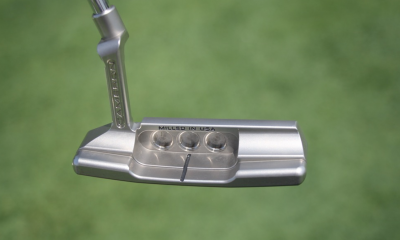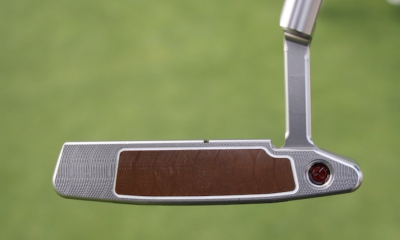Opinion & Analysis
The best bets for the 2023 Valero Texas Open

Forget the $1.5 million due to the winner. The real prize at the end of this week’s Texas Open will be that last-minute invite to the 87th Masters starting on April 6th.
That payout is also nothing compared to the $3.5 million that Sam Burns copped when winning last night’s World Match Play, or the obvious prestige of what is to come. That has to affect the field this week, and we even lose local hero Jordan Spieth, veteran of seven outings around the San Antonio Oaks course.
The 29-year-old has, of course, an enviable record at Augusta with a win and four top-three finishes, so it’s no surprise he takes a break to prepare for the big one, after seven events since the start of February to prepare for the big one.
That all leaves world number 17 Tyrrell Hatton as clear favourite with his closest challengers (according to the market) being Hideki Matsuyama (#21) Si-Woo Kim (#39) and Corey Conners (#40). Behind there is a host of likely candidates that rank just off that vital top-50, with the likes of Rickie Fowler looking to continue his comeback and qualify for next week’s Masters after being a regular for 10 years straight until 2021.
The course itself ranked in the top third for overall difficulty last season and requires a solid overall game, favouring neither bombers or plodders. All styles have a chance here this week, and many of the past challengers confirm that view.
2016 champion and three-time runner-up Charley Hoffman said, “Tee to green is very visual, shapes with the trees and it’s a tough driving golf course,” whilst 2019 winner and three-time Masters top-10, Corey Conners summed up the test.
“Basically took care of the holes that you need to take care of, the par 5s, and No. 5, a short par 4, I was able to make birdie,” he said. “Other than that, just kept it pretty simple. There’s a few pins that are close to some slopes, so played a little safer on some shots, but struck it really well. So just tried to keep it simple and scored well.”
Wind is the main defence here, and therefore it’s no surprise that all the last four winners show form at the likes of Bay Hill, Waialae, Mayakoba, Hilton Head, and, in the case of Spieth, Conners and Kevin Chappell, at Augusta.
J.J Spaun
Since moving to its current slot just before the Masters, nobody has defended the Texas Open title, but it looks as if J.J Spaun is ready to strike again after an encouraging display at the Match Play last weekend.
After making his way through the grades, winning on the PGA Tour Canada and the Web.com tour, a misdiagnosis of his diabetes stalled the 32-year-old, and he dropped from just outside of the world’s top 100 to a place closer to 500th. However, in the second half of 2021, he ran up to Grayson Sigg at the Albertsons Boise Open before a top-10 in Bermuda settled the drop.
2022 was another year of progress as he took in four top-30 finishes early in the year – at La Quinta and, more relevantly, at Pebble Beach, Honda and Valspar – before a two-shot victory here. The final half was equally decent with one missed-cut in 10 outings, with top-15 finishes at the Shriners and (again relevant for comp course fans) at Mayakoba and at Sea Island. On top, he led the better-class St. Jude field for every one of the first three rounds before a final round collapse.
The new year has been mixed, with Spaun making the weekend in only half his eight starts. However, those 50 percent take in a fifth place at Kapalua (in second place going into Sunday) and 12th at the Sony, where again he was in the final group for the last round.
Again the 33rd finish at Riviera disguises that he was in the top-10 going into payday and he bounced back again with comfortable victories over Matt Fitzpatrick, Sahith Theegala and Min Woo Lee at Austin last week to head his talented group.
With a solid tee-to-green required this week, be encouraged that he ranked fifth at both his first two efforts this year in Hawaii, whilst his short game has seen him in the top-22 for scrambling in six of his last eight recorded starts.
Coming into this event last year, the Scottsdale resident had three midfield finishes mixed with missed weekends, something very similar to his lead in here this week.
Aaron Rai
Perhaps inspired by Matt Wallace’s victory in the Dominican Republic last week, Aaron Rai can continue a great run for British golfers following Wallace, David Skinns on the KFT and Georgia Hall’s very nearly come-from-behind effort at the LPGA Drive On Championship.
The 28-year-old stormed to the front rank in Europe after gaining automatic qualification from the Challenge Tour after three wins before the end of July 2017, before beating Matt Fitzpatrick in Hong Kong and Tommy Fleetwood in a play-off for the Scottish Open.
Hopefully that Boise Open is of some relevance, as Rai finished alongside Spaun as runners-up in 2021, letting a one-shot lead slip on Sunday, but still gaining his tour card.
It’s hard to argue against the view that everything since has been very one-paced, but on the pick of his form he has to be of interest here this week, particularly after a strong showing at Sawgrass.
2022 saw Aaron Two-gloves finish top-20 at Mikey, Houston, Canada, Shriners and Houston on the PGA Tour, and when dropped to the DPWT, he finished in the top echelons of the Italian and Irish Opens.
Rai hasn’t set the world alight in 2023 but was just outside the top-20 after round one at the Sony, led the Farmers field after the first round, was a never-nearer 29th at the Genesis, fifth after round one at Bay Hill and went into the final round at Sawgrass in the top five.
It’s going to be about putting it all together the same week, and he comes here after an encouraging top-30 here last year when two rounds of 74 and 73 spoilt the first and third rounds that saw him twice in the top seven.
In an interview after his first round 67 last season, Rai admitted it was useful to know the course:
” I think putting together how the course is on the Tuesday and having in mind how the course is going to change and I think that’s where it’s very good asking questions and speaking to people who have been here for a long time. So those are the most important things for me.”
Over the last three months, Rai ranks top-10 for driving accuracy, 11th for ball-striking, 10th for greens, and top-20 for tee-to-green at all of Riviera, Pebble Beach and Sawgrass. Perfectly able to find the short stuff in the wind, it’s clear that the flat stick is the one thing holding him back, but any improvement allied to those sharp stats will see him right there on Sunday.
Kevin Chappell
Although always tempted by the younger, unexposed brigade, I’ll finish this week with two stalwarts.
First up is former top-class major contender Kevin Chappell, who was put up at 90/1 for the Corales last week, did nothing wrong and is now a much bigger price!
Formally 23rd in the world, the 36-year-old has dropped to outside the top 600 but has dropped hints over the last three weeks that he may be approaching the play that won the Texas Open, run-up at Sawgrass, and finish top-10 in four majors.
Since his body broke down in 2018, golf has been a struggle, and he has not recorded a top 10 since the CIMB in October of that year. However, after missing nine of his last 10 cuts, the Californian resident has improved to 29th at Palm Beach Gardens (round positions 84/48/50/29) and 15th at Puerto Rico (47/54/33/15).
Strokes gained were positive throughout at the Honda, and he ended up almost repeating his 2022 effort at the Corales, finishing one place worse, in 16th place.
Given his efforts also at the Honda (13th), here (18th) and Barbasol (21st) in the recent past, we need to heed any nudge that Chappell has made his way back.
Now on a run of 16/15/29 it appears that the four-time major top-ten player is over his near career-ending surgery, and he returns to San Antonio after a career record that reads one win, one runner-up, fourth, 15th and 18th.
With nine of his last 12 rounds being 70 or under, and none worse than 72, quotes in triple figures border on the insulting.
Kevin Streelman
We don’t see many teenage ‘Kevin’s these days, so there is no shock in finding the final selection is in his 40s.
Rather like his namesake, Streels has been in the doldrums, and whilst his return to form is not as obvious as Chappell’s, it’s worth jumping on the positive parts of his resumé from the past 14 months or so, again returning to a favoured track.
Another with back-form that gives him a serious shout – top-three finishes at the Farmers, Sawgrass, Pebble Beach, Bay Hill and Harbour Town – he also backs it up with consistent form at Summerlin, home of the Shriners (amongst other titles), an event won twice by 2013 Texas champ, Martin Laird.
Monday morning back to work!!!
?@PGATOUR? ?@attproam? pic.twitter.com/Q0YQSd4kEq— Kevin Streelman (@Streels54) February 6, 2023
While the 44-year-old has dropped well outside the world’s top-100, it’s noteworthy that he can still post top finishes and has recorded nine top-10 finishes over the last couple of years, including second-places at Bay Hill and River Highlands and a third at Silverado.
2021 saw several top-15s that incorporate Bay Hill (again), Wyndham, Match Play and at top-20 finishes at three of the four majors, whilst last season found him posting runner-up at the Barbasol, seventh at Valspar, and top-20s at Shriners, Honda and here, at the Texas Open.
Suddenly the results look far better than at first glance and many of his final figures tend to hide some decent play.
Since October ’22, Streelman was in 10th at the halfway point at the Sanderson, sixth going into Sunday at the RSM, 14th after round one at Riviera and made his way from 85th after day one at the Valspar to lie top-20 after the third round.
He’ll pick and choose his events but he’s still got fire in his belly, posting his best iron play for a while at Innisbrook last time out, and he’s back at a course that he’s played eight times, racking up every cut, an average position of around 21st and posting last three years finishes of 18/6/8.
Recommended Bets:
- J.J Spaun WIN
- Aaron Rai WIN/TOP-5
- Kevin Chappell – WIN/TOP-5
- Kevin Streelman – WIN/TOP-5
- Kevin Streelman – Top-20
- LIKE0
- LEGIT0
- WOW0
- LOL0
- IDHT0
- FLOP0
- OB0
- SHANK0
Opinion & Analysis
The Wedge Guy: What is a “wedge” anyway?
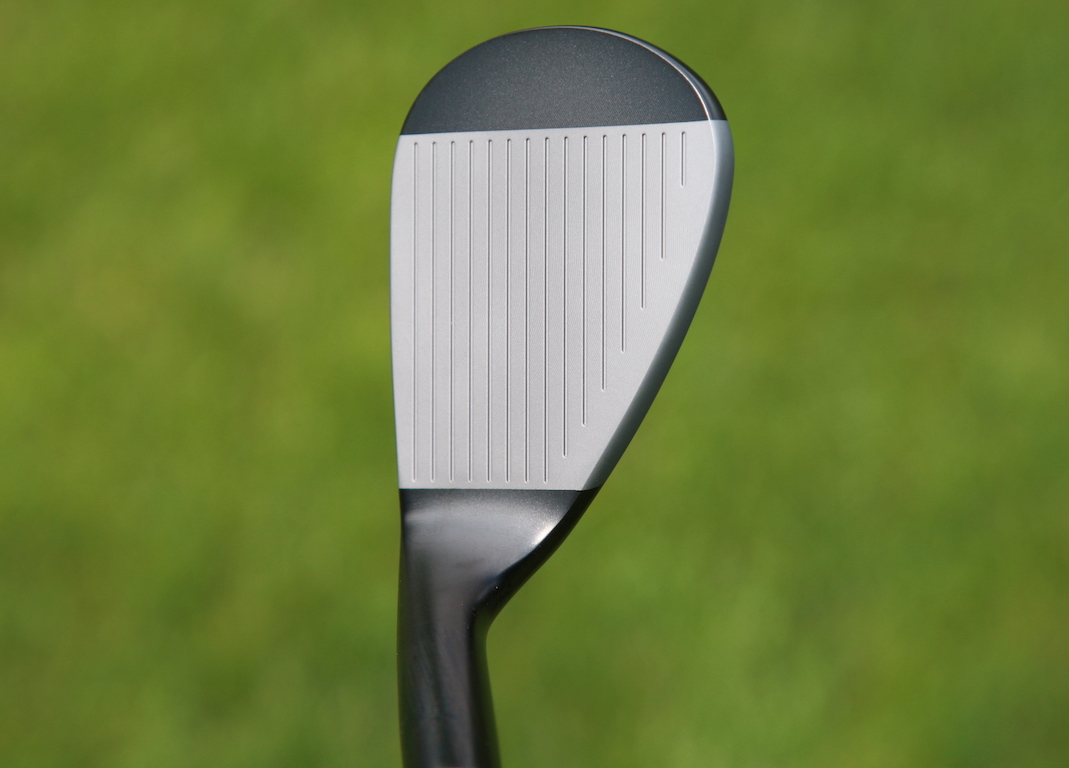
This week’s post is somewhat of a continuation of the recent path we’ve been on, discussing the nuances of those high-loft clubs at the short end of our sets – those specialty clubs we call “wedges.” The real question might be:
“What is a ‘wedge’ anyway?”
Can that name be given to any iron-type club simply based on its loft? And if that’s the defining criteria, where do “wedge” lofts begin? And can clubs of all different design configurations still all be “wedges” just because they fall into that arbitrary range of lofts?
To the first question, my historical research indicates the term “wedge” first came into common use in the 1930s with the invention of the original sand wedge, generally credited to Gene Sarazen. As the legend goes, after flying with Howard Hughes and observing the use of flaps to make the airplane go up or down, he conceived the idea of a downward angle on the sole of a niblick to make it “reject” from the sand. So, after numerous prototypes and testing, the club that came to be known as the “sand wedge” was born.
Those clubs were about 55-56 degrees of loft, and quickly became widely adopted because of this revolutionary performance from bunkers. My guess is the term “wedge” was applied to that club because that’s exactly how you used it – you “wedged” the club between the ball and the turf – loft made the ball go up and the sole made the club “bounce” off the turf.
The professionals of the 1940s and 1950s began to use their sand wedge for more specialty shots around the greens, but most often relied on their highest lofted iron for most routine pitch shots. In sets back then, that club had 50-52 degrees of loft and was often called a “pitching wedge,” but some labeled it simply a “10-iron,” or in Ben Hogan’s case, the Equalizer.
But that club looked like the irons it matched, bearing little resemblance to the specialty “sand wedge” with its big flange and heavy sole, but I really don’t know why it was also called a “wedge.”
As iron lofts began to strengthen in the 1980s, the need for a “gap wedge” came about, as that valuable 50- to 52-degree iron was disappearing. Then at the other end of the set, the “lob wedge” appeared. Both of those clubs bore some resemblance to the sand wedge because they were most often presented as loft extensions in manufacturers’ wedge product lines.
So, now let’s fast-forward to 2023. Most iron sets have a “P-club” of rarely more than 45 degrees, and we’re seeing more and more with as low as 42 degrees of loft. Many of the iron models offer set-matching “wedges” labeled “A”, “G”, “S”, etc. to extend the iron design up into the higher lofts. These all look almost identical to the 6-iron in that set, because this industry is still caught up in the notion of “matched” sets. (But that’s a topic for another day)
In the “wedge” category, product lines can be confusingly broad, with lofts from 46 to 64 degrees and all kinds of specialized sole configurations. So, back to the original question — what is a “wedge?”
Think about it this way.
At the long end of your set, the club with 22 to 24 degrees of loft might be configured as a fairway wood, or a hybrid, or a hollow high-tech “driving iron,” or simply the 4- or 5-iron that matches your irons. Each golfer can determine which configuration serves him or her best at that loft and the distance it produces.
Likewise, the clubs at the higher loft end of your set might look like your 6-iron, or might look like a traditional wedge, or might look like one of the numerous specialty wedges with a wider sole. My “wedge” designs for Edison Golf don’t really look like any of those.
But just like those options you have to build out the long end of your set, each of those various ways to configure a higher-lofted club will produce different results. So, can we really lump all of these high-loft options into a singular category and call all of them “wedges?”
Or is it time to come up with a totally different word to describe those high-loft clubs in our bags that have the assigned task of delivering consistent results at a range of distances as we get closer to the green?
I’m not sure I have the answer, but it should be fun for all of us to stop and ponder the question? Your thoughts, everyone?
- LIKE17
- LEGIT6
- WOW0
- LOL0
- IDHT0
- FLOP0
- OB0
- SHANK4
Opinion & Analysis
The best bets for the 2023 John Deere Classic

Probably not quite the ‘classic’ of its name, but the John Deere provides some recall of the good and bad of golf betting.
Back in 2013, a young Jordan Spieth made his reputation by sinking a 72nd hole bunker shot to put the willies up course specialist and lumpy bet Zach Johnson. As is the way, the Deere Run guru then bogied his final hole, going on to defeat in a three man play-off.
Fast-forward nine years and J.T Poston landed a confident wager in last year’s event, leading all the way to land a comfortable three shot victory. Can’t wait to see which way it goes this time.
Expect birdies galore around the course this week, with very little difficulty in finding fairways.
With most of the field managing to hit the large greens, GIR stats are less worthy than they might otherwise be. Instead, players need to hit it close enough so they make the majority of putts. As with previous winners Bryson DeChambeau and Lucas Glover (to name just two), high-class ball-strikers can give themselves enough chances to land their share of birdies.
Current form looks a must here this week, with cross-over form from Travelers including Spieth, DeChambeau, Daniel Berger and Brian Harman, and Rocket Mortgage champions Cameron Davis and DeChambeau showing up well at this week’s venue, all recording a similar winning score.
When the market opened, I felt Emiliano Grillo would be third or fourth favourite, so finding him at a bigger price than PGA maidens Denny McCarthy, Adam Schenk and new star on the block Ludvig Aberg was a pleasant surprise.
The three names seem to have more improvement in them than the 30-year-old Argentine, but none have the victories, or the course form, to justify being ahead in the market.
McCarthy has lifted his reputation even further with his play-off loss at Muirfield and leading to halfway at River Highlands, but he faded away when under the cosh here last year, allowing the experienced Grillo to be the closest challenger to Poston (alongside Chritiaan Bezhuidenhout), whilst the 23-year-old Aberg may well be the Second Coming but faded away late on at both River Highlands and Detroit, recording large minus figures for his iron play. Sub 25-1? Really.
Schenk makes a lot of sense on recent form, with iron play making up the most of his impressive tee-to-green stats, but at anything over 25/1 in a weak field, the Charles Schwab winner appeals more than anyone.
Grillo ranks 3rd on tour-tips overall ranking for this event, with half-a-dozen instances of top-25 tee-to-green play in his last eight starts. In the same period (since Bay Hill) the Argentine has listed in the top 12 for approach play on five occasions, leading the field at the Arnold Palmer and ranking 12th at Travelers.
The 15th place at River Highlands on his last outing is the best finish there since 2018 (19th) after which Grillo suffered a slump, falling down the world rankings from 47th to 156th during 2020.
2021 saw him come back with a runner-up behind Stewart Cink at Harbour Town, following up a year later when matching his second place here with a silver medal behind a rampant Tony Finau at the 3M.
Grillo was trending in the right direction before his play-off win at Colonial, with form figures of 7/5/23 and an unconcerning missed-cut at the PGA, and the win, from a nervous Schenk, and the world number one Scottie Scheffler, reads very nicely in this field.
Whilst never the greatest putter in the world, that aspect has improved greatly. Now ranking in 6th for putting average off a large number of greens hit, he has positive figures at five of his last seven starts and comes here recalling last season’s +8.5 strokes tee-to-green and +4 strokes for the flat stick.
Doug Ghim is playing nice golf at the moment, several years after being touted as a superstar.
This test suits the short-hitting but accurate player, and with form figures of 33/15/12/19/27, he’s the type to appeal as a solid top-20 bet.
For win purposes though, I’ll revisit a Grillo formline and row in with the man that lost to the selection by just one shot at the Web.com Tour Championship some eight years ago, Chez Reavie.
I put up the 41-year-old a couple of weeks ago at a monster 200/1 to regain his 2019 Travelers crown, and he gave us a thrill until fading away on Sunday, yet still paying out a healthy return for a place.
A 2021 finish of 18th and a previous pair of top-15 finishes led to him going off around 50/1 for this event 12 months ago, and I’m not sure he’s done anything, or faces tough enough opposition, to be 10 points longer.
Previous to his latest win at the Barracuda in July last year, the three-time winner posted 27th at Colonial and 8th at River Highlands. This time, he comes here after being 12thg at the halfway stage of the Charles Schwab and in second place after three rounds in Connecticut.
Now, with six consecutive cuts made and four of his last eight rounds in the low-to-mid-60s, he arrives after recording an average of between 5.5 and 6.0 strokes for approaches and tee-to-green, a repeat of which will see him bang there come Sunday evening.
With River Highlands and Deere Run form in abundance, he’s yet another old campaigner I feel will prove too much for the young guns.
Finally, we’ll go with a pair of three-figure pokes, firstly in the way of David Lipsky, a player with two wins on the European Tour at tracks that require a touch of guile over strength.
It may be five years since the 34-year-old worked his way around Leopard Creek to back up his Crans victory, but his career has not been devoid of highlights, including a four shot victory over Taylor Pendrith at the short San Antonio course in Texas.
2021 saw him record six top-10 finishes, including at Abu Dhabi and Valderrama, whilst a year later he finished top-10 at the Corales and better-class Mexico Open behine Jon Rahm and Tony Finau.
A season-opening top-five at the Sony promised much and, whilst it hasn’t gone that well, Lipsky can still boast top-20 finishes at the Charles Schwab and Memorial, where at halfway he was first and sixth respectively.
Always around 24th place last season, Lipsky has shown he can raise his game at a lower level, whilst two of his three victories have come in 25-under and 18-under. He can do a job when conditions suit, and at 125/1, he’ll do as a chance to gain some decent each-way money.
Next to him at 125s is 26-year-old rookie Carl Yuan, now finding his feet at this level yet massive amounts of points bigger than some of his more sexy rivals.
A winner on his home tour, he had a remarkable 2022, winning in Louisiana, and racking up a further four top-five and four top-10 finishes and getting himself in at the highest level a year after he was due.
Explaining why he missed promotion 12 months earlier, Yuan said it was every player’s dream to represent their country, so popped off to The Olympics rather than guarantee his PGA card through the final six events of 2021.
Still, he’s here now and, after a slow start, made three consecutive cuts – Houston, RSM and Sony – before another lull from mid-January.
Shaking that off, he bounced back to form with the halfway lead at the better-class Canadian Open, stating, “That’s my goal [retaining his card] coming into the week. That’s my No. 1 goal. Not a result goal, just like being in the present, hitting shot by shot and, yeah, being out here trying to have the most fun. All of it.”
It seems to be working as he finished a highly respectable 18th before landing another top-20 at Detroit last week after a third-round 64 had gotten him inside the top-10 going into payday.
This massive hitter will be able to club down for most of this week’s test, ensuring he builds on some steady seasonal figures for tee-to-green and with untold improvement to come.
There is a chance he needs a much bigger environment to thrive, but as an unexposed, potentially high-class improving recruit, he needs taking a chance with.
Recommended Bets:
- Emiliano Grillo
- Chez Reavie
- David Lipsky
- Carl Yuan
- LIKE1
- LEGIT0
- WOW1
- LOL0
- IDHT0
- FLOP0
- OB0
- SHANK0
Opinion & Analysis
The Wedge Guy: The case against set-match wedges
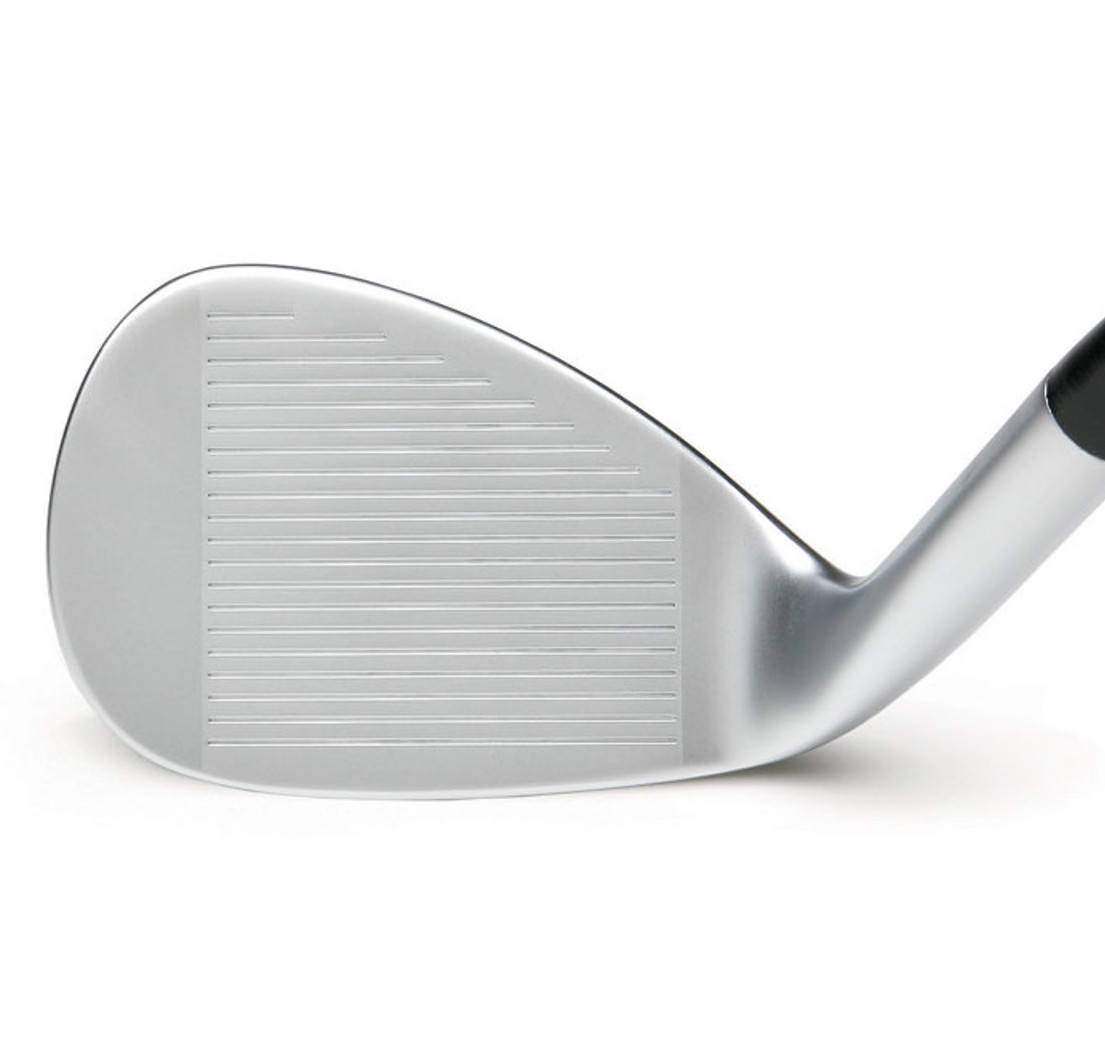
One side-effect of the relentless effort by major iron makers to win the “launch monitor wars” that pit one 6- or 7-iron against another is that the lofts throughout sets of irons have been continually strengthened to a point of what I consider ridiculousness. There are two major problems with this trend in specifications for sets of irons. The first is that to try to win the “launch monitor wars,” iron makers have to try to make their 6- and 7-irons go farther than the other guys’. That means making those mid-irons stronger in loft and using a bit of “trickery” by increasing the loft gapping between your higher-loft scoring clubs so that your “P-club” doesn’t get too strong, too (though modern “P-clubs” of 43-45 degrees of loft are really not “pitching wedges” at all).
Historically, iron lofts progressed through the set at four-degree loft intervals, and .5-inch length differentials. This wasn’t happenstance at all, it was the result of rigorous testing by professionals and average golfers. Those technical differences typically delivered consistent distance gapping from the pitching wedge down through the set.
A review of the specifications of almost every set of irons on the market today, however, will reveal that loft differentials are now five degrees between the short irons and as little as two degrees at the long end of the set. This is totally counter-intuitive to how you can improve your short iron and wedge precision. Why in the world would you want to increase the distance differences between your shorter irons, which is where you most need distance control precision? After all, a 6-iron shot that is 25 to 30 feet long or short is pretty darn good, but it sucks if you have a 9-iron or wedge in your hands.
Understand that the “holy grail” of distance in golf club design is the combination of high launch and low spin. Achieving this is relatively simple – put as much mass in the bottom of the golf clubhead as possible.
So, the second major problem caused by the “launch monitor wars” is how modern irons are designed. The early “solution” to longer-hitting mid-irons was extreme sole-weighting with thinner faces. The newer technologies we’re seeing in irons combine even faster faces with heavy tungsten inserts in the sole of the club.
But the problem with almost all irons on the market – especially in the “game improvement” category – is that this same design and technologies are applied throughout the “matched” set of irons and even into “wedges” that display that same design concept. And that’s where your prime scoring clubs are being compromised.
High launch and low spin are great in a driver or fairway wood, and maybe even desirable in your middle irons — but that is the exact opposite of what you need to achieve consistent distance precision in prime scoring range when you have a short iron or wedge in your hands.
Almost all accomplished players have learned to hit their short irons and wedges with a penetrating ball flight and lots of spin to stop the ball in its tracks once it hits the green. So why would you ever want to play short irons and wedges that have all their mass at the bottom, which is designed to deliver the exact opposite of what you should be seeking?
Now, let’s go back to the title of today’s post.
Either your 6- or 7-iron is 28 to 30 degrees of loft – but have you ever stopped to think that this loft is closer to that of your driver than to where your “wedge” lofts begin (around 45 degrees)? I feel certain that no golfer in the history of the world has ever proclaimed
“I really like my 7-iron. Can you make me a driver that looks just like it?”
In fact, from your 7-iron down to your driver, you likely have at least four, if not five, completely different clubhead designs in order to optimize performance at a given range of lofts. That iron design might evolve to a driving iron design a few degrees lower, then most likely to a hybrid design a few degrees lower than that, then to a fairway wood as lofts get below twenty degrees, and finally to a driver at 9 to 12 degrees.
So, if it takes four to five completely different clubhead designs to optimize performance at the long end of the set, how realistic is it that only one design throughout your set of irons can deliver the performance and precision you need at the short end?
I’ve always believed that every club in your bag has a specific purpose and expectation. Fairway woods, hybrids, and long irons are to get you close to or maybe even on the green from a long-distance approach. With middle irons (5 through 7 or 8), your goal is to get on the green within a reasonable distance, or certainly not to leave yourself a tough greenside save.
Your “money clubs” are those with lofts above 37 to 40 degrees, as this is where you have a chance to get close enough for the occasional one-putt, whether that is for a birdie, par, or bogey. And this is the end of your set where you likely have not spent the time to make sure it’s just right.
To accent just how important this part of your set really is, did you know (if you discount the fact that almost all so-called par-5 holes on the tour are really just long par 4s for those guys) the entire PGA Tour is over par outside 9-iron range?
Something to think about, for sure.
- LIKE59
- LEGIT18
- WOW4
- LOL2
- IDHT0
- FLOP4
- OB0
- SHANK3
-

 19th Hole2 weeks ago
19th Hole2 weeks agoTiger Woods delivered stinging message to major winner after denying him lift on private jet
-
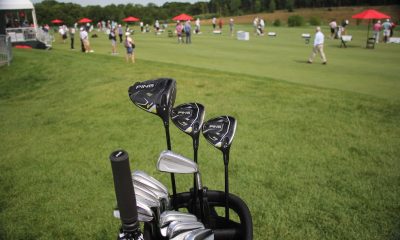
 Whats in the Bag2 weeks ago
Whats in the Bag2 weeks agoSeamus Power WITB 2023 (June)
-

 Whats in the Bag3 weeks ago
Whats in the Bag3 weeks agoOmar Morales WITB 2023 (June)
-

 Whats in the Bag3 weeks ago
Whats in the Bag3 weeks agoBlayne Barber WITB 2023 (June)
-

 Whats in the Bag3 weeks ago
Whats in the Bag3 weeks agoBen Carr WITB 2023 (June)
-

 Whats in the Bag2 weeks ago
Whats in the Bag2 weeks agoTom Hoge WITB 2023 (June)
-

 19th Hole3 weeks ago
19th Hole3 weeks agoJournalist alleges this is the ‘unforgivable’ act Phil Mickelson committed against Pat Perez and his wife
-
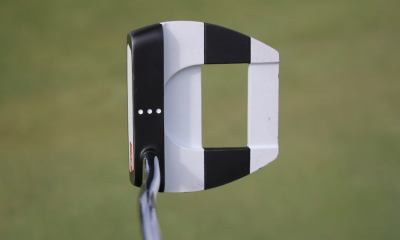
 News2 weeks ago
News2 weeks agoKeegan Bradley’s winning WITB: 2023 Travelers Championship













